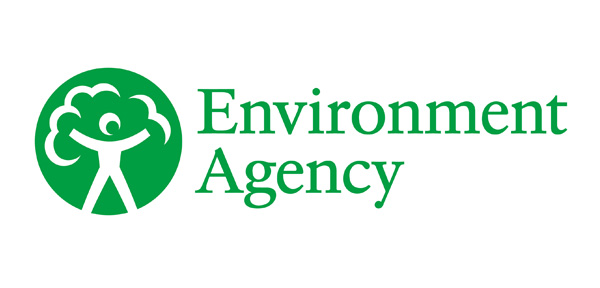Tackling river pollution in Herefordshire
Tasked with reducing river pollution, the Environment Agency needs to identify the individual fields that are responsible for dispelling soil, fertiliser and nutrients into rivers, within catchment areas covering hundreds of square kilometres. Using ArcGIS, it can now pinpoint high risk locations more quickly, collect evidence via smartphones and operate more efficiently to help improve river water quality.
Search area for potential soil run-off reduced by 96% from 140 km2 to 5.6 km2
Number of inspections possible per day, per officer, increased from one or two to as many as ten
Faster interventions and projects with farmers, improving river quality
The Challenge
Rivers are the healthiest they have been for over 20 years, but there is still more to do. That includes tackling river pollution, which is a key factor when it comes to improving water quality for the Environment Agency. One of the most commonly occurring causes of river pollution is the run-off of soil, fertilisers and nutrients from agricultural land. Indeed, in Herefordshire where soils are generally light in composition, 48% of rivers that fail to achieve ‘good’ ecological status under the EU’s Water Framework Directive are contaminated by soil and soil-based nutrients.
The Environment Agency has the resources to work with farmers to help them understand and address the problem, as well as the authority to penalise farmers who continue to cause pollution to nearby rivers. The challenge is identifying precisely which fields the soil and nutrients come from, in a potential catchment area of hundreds of square kilometres. Previously, environment officers only had past intelligence to help them identify places across Herefordshire that might pose water quality concerns. During heavy rainfall they would visit these areas for signs of soil run-off, at the same time looking out for visible signs which could indicate new areas of concern, but the fields that cause soil pollution are rarely accessible by vehicle and, depending on land gradients, may be some distance away from the rivers they contaminate.
Rather than having to hunt for potential sources of pollutants across the entire trial area of 140 km2, we could see that just 4% of the catchment posed a possible threat
David Throup – Area Environment Manager for Herefordshire and Worcestershire, the Environment Agency
The Solution
In what has proven to be a highly successful trial in Herefordshire, the Environment Agency is now using Esri’s ArcGIS platform to analyse river catchment areas and identify agricultural fields that are likely to pose a high risk to water quality. It combines Sentinel satellite data and vegetation data to identify ‘brown’ ploughed fields that are more susceptible to soil loss, then adds LIDAR data, showing land gradients of 6% and above, to hone in precisely on those cultivated fields that are steeply sloped towards the river.
This analysis, performed in Esri’s ArcGIS Desktop solution, is uploaded to Esri’s cloud-based ArcGIS Online, where it is visible to all Environment Agency employees. Specialist environment officers then use Esri’s Collector App for ArcGIS on smart phones and tablets to find and survey the ‘high risk’ locations during heavy rainfall, which allows them to collect evidence in the field and upload it directly to the cloud in real-time.
We will be able to see how changes in land use have a changing impact on river pollution, year after year, and use this insight to plan future river conservation programmes
James Barnes – GIS Manager, the Environment Agency
Benefits
Rapid identification of potential risks
Using ArcGIS, the Environment Agency can now identify potential river pollution risks with far greater precision. “Rather than having to hunt for potential sources of pollutants across the entire trial area of 140 km2, we could see that just 4% of the catchment posed a possible threat,” says David Throup, Area Environment Manager for Herefordshire and Worcestershire. “In this case, 4% corresponded to just 50 fields, so we could focus our attention on inspecting these specific locations.”
Improved efficiency in the field
Environment officers are now not only more targeted in their approach, but are also able to work far more efficiently due to the use of Collector App. “Previously, environment officers would probably have gone out on a rainy day, looked at one or two locations, that may or may not have been causing a problem, and then come back to the office to write up their report,” explains Throup. “Now, they might inspect around 10 locations and upload all the data while in the field. It’s quicker and more relevant.”
Real-time resource allocation
When environment officers are dispatched to conduct inspections during heavy rainfall, employees back at the office can use ArcGIS to track their progress and review the data collected as soon as it is uploaded. Managers can then make instant decisions to direct the officers to different fields, based on the evidence that they or their colleagues are gathering. As Throup explains, this use of mobile and cloud-based GIS allows the Environment Agency to “make the most of heavy rainfall events to gather the most evidence with a small team.”
More effective river conservation
Now, the Environment Agency is able to find problems quickly, engage in more conversations with farmers about river pollution and enforce regulatory controls where necessary. “Over time, I am sure that our use of ArcGIS will result in less soil going into Herefordshire’s rivers,” Throup says. “Since the trial began, there have been a number of successful interventions that have resulted in farmers changing their farming practices to reduce soil run-off.”
Better long-term conservation planning
Over time, the Environment Agency expects to be able to gain more and more insight by collecting and analysing information in ArcGIS to build up a picture of high risk locations and high risk activities. GIS Manager James Barnes, who helped develop the solution says, “We will be able to see how changes in land use have a changing impact on river pollution, year after year, and use this insight to plan future river conservation programmes.”



